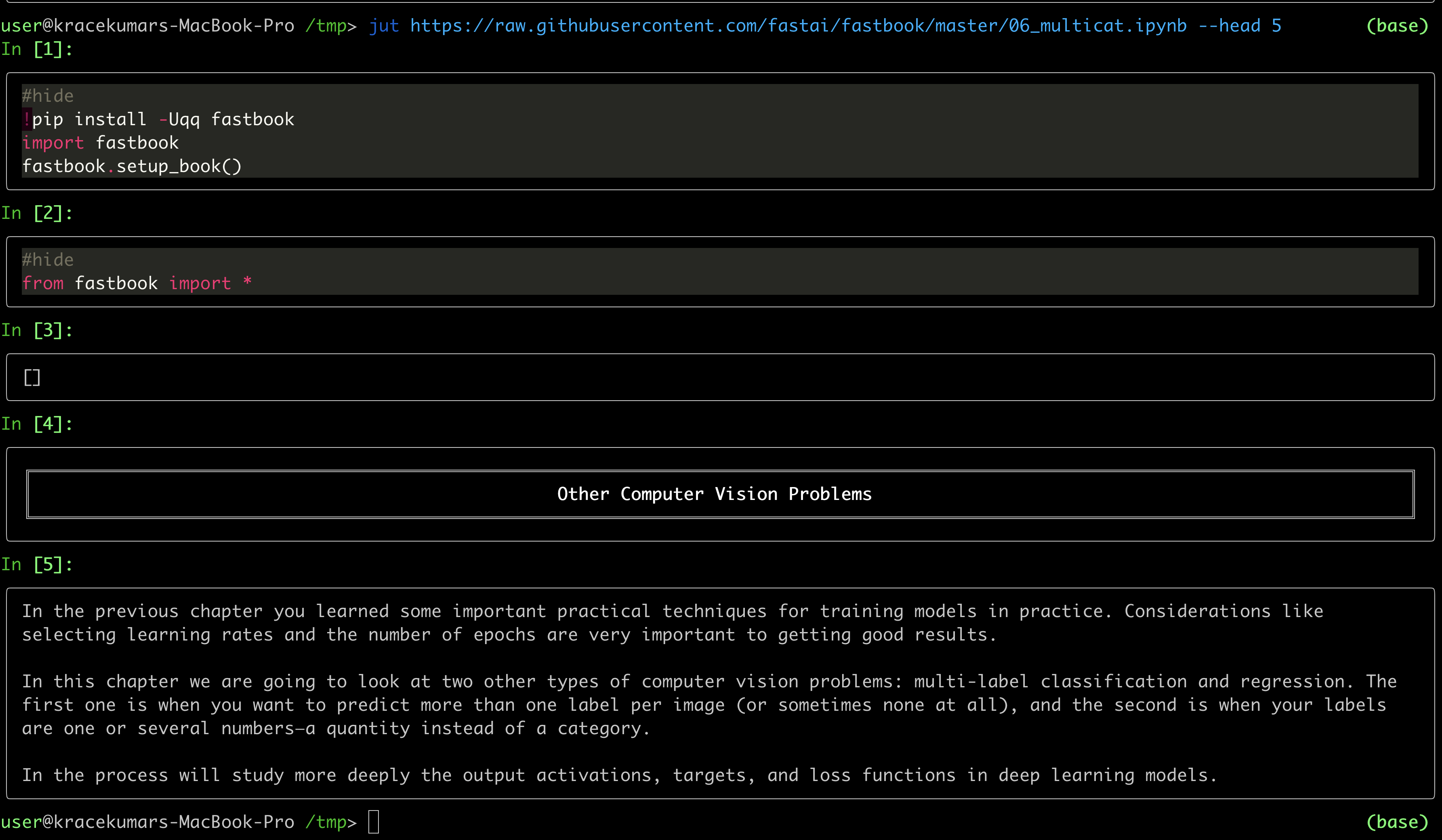jut - JUpyter notebook Terminal viewer.
The command line tool view the IPython/Jupyter notebook in the terminal.
pip install jut
$jut --help
Usage: cli.py [OPTIONS] PATH
Options:
-he, --head INTEGER RANGE Display first n cells. Default is 10
-t, --tail INTEGER RANGE Display last n cells
-p, --single-page Should the result be in a single page?
-f, --full-display Should all the contents in the file displayed?
--force-colors Force colored output even if stdout is not a
terminal
-s, --start INTEGER RANGE Display the cells starting from the cell number
-e, --end INTEGER RANGE Display the cells till the cell number
--exclude-output-cells Exclude the notebook output cells from the output
--no-cell-border Don't display the result in a cell with border
--help Show this message and exit.Note: Command line arguments may be different, use jut --help to get upto date command line options
$jut debug/file.ipynb
...
$jut https://raw.githubusercontent.com/fastai/fastbook/master/06_multicat.ipynb --tail 10
...


